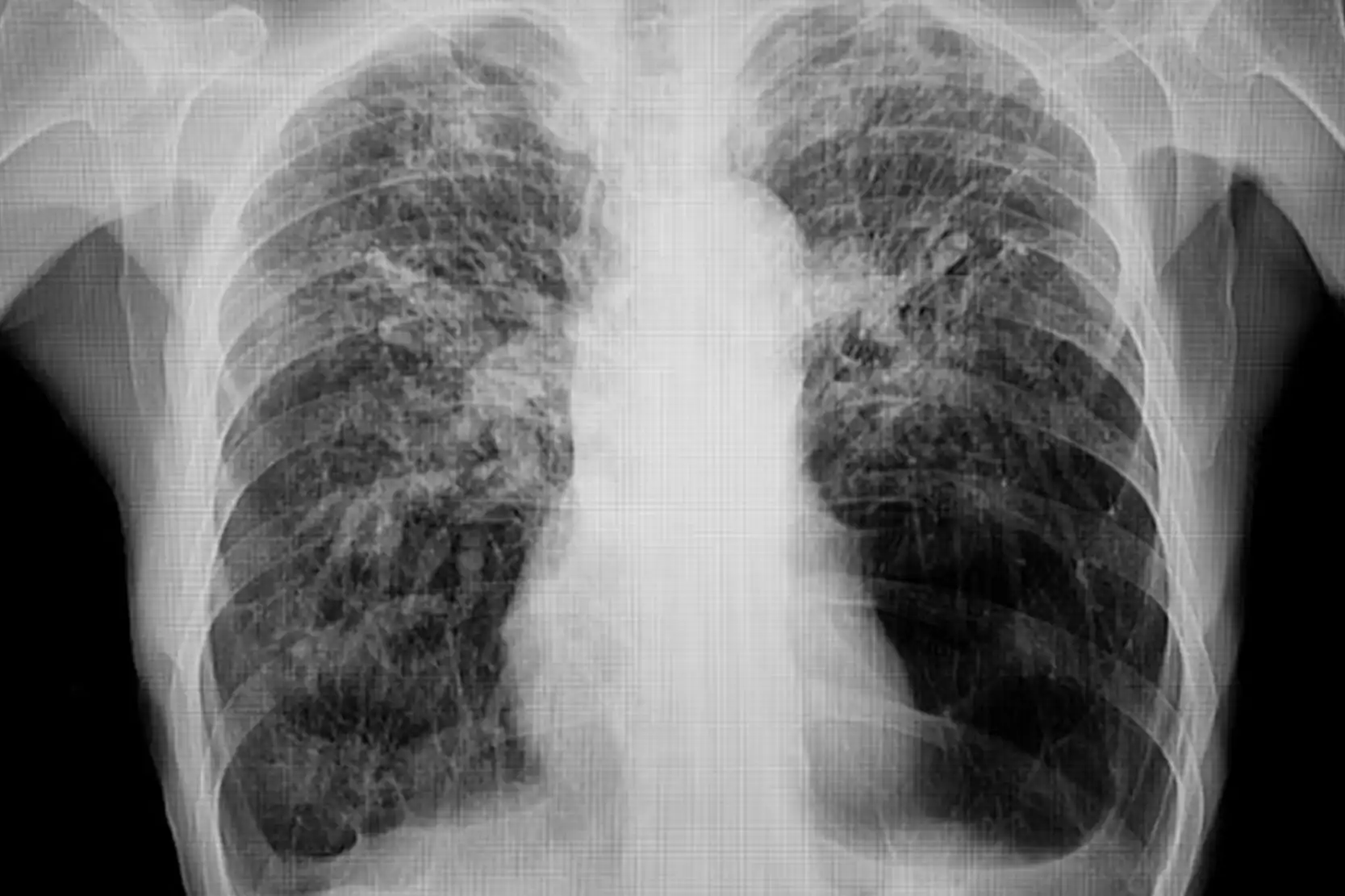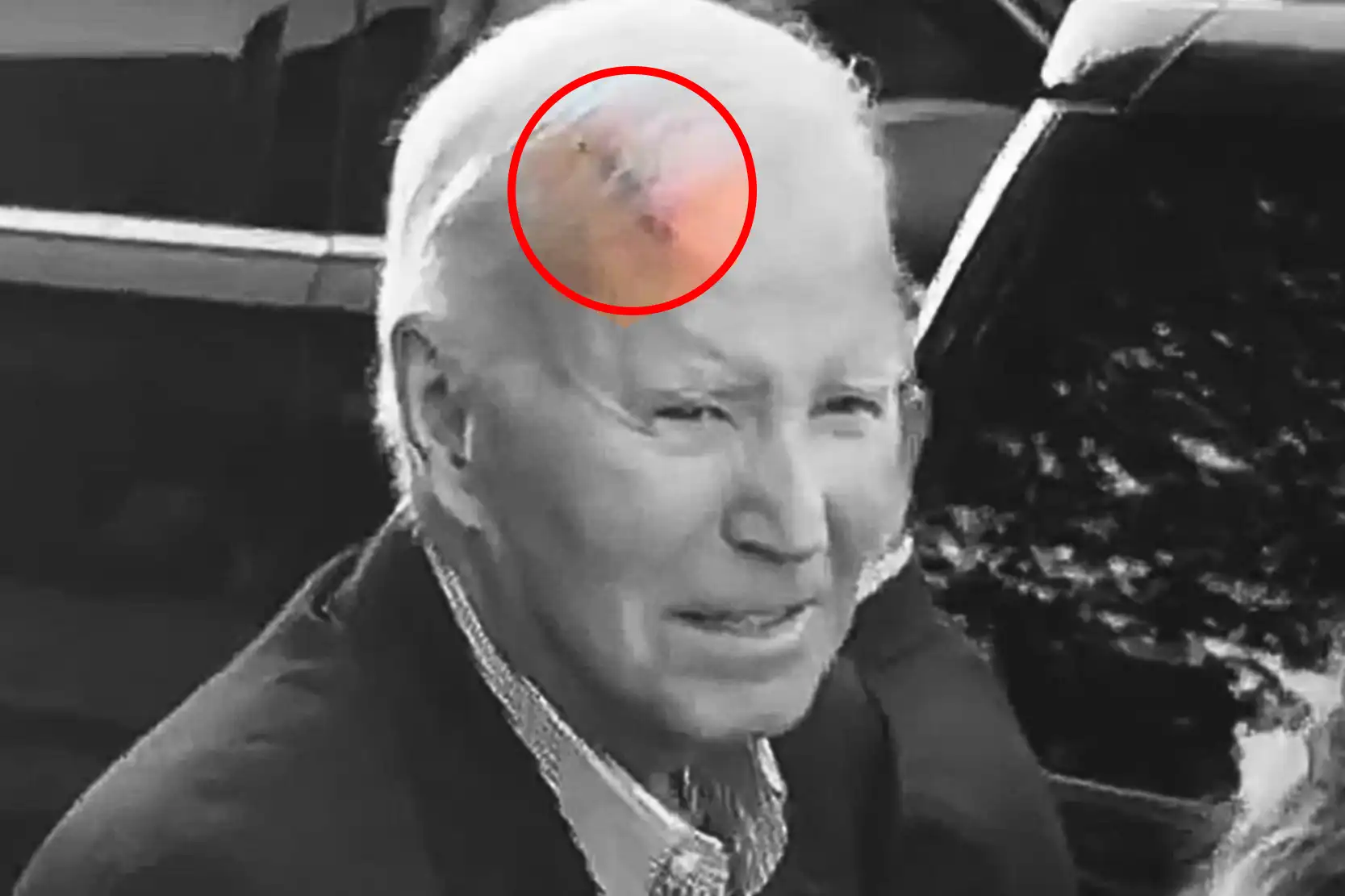
NEUROSCIENCE
Brain Tumors: Causes, Symptoms, and Treatment
-
Rahul Priydarss
Explore in-depth information on brain tumors: causes, symptoms, types (including gliomas, meningiomas, and metastatic tumors), treatment options (surgery, radiation, chemotherapy), and the latest advancements in care. Understand the impact on brain function and how to navigate diagnosis and treatment effectively.
Introduction to Brain Tumors:
Brain tumors are abnormal growths of cells within the brain or its surrounding tissues. They can be benign (non-cancerous) or malignant (cancerous), and their presence can significantly affect brain function. Primary brain tumors originate in the brain itself, while secondary or metastatic brain tumors spread to the brain from other parts of the body. Symptoms vary widely depending on the tumor’s size, type, and location and can include headaches, seizures, vision or hearing problems, and changes in personality or cognitive function. Diagnosis typically involves imaging techniques such as MRI or CT scans, and treatment options include surgery, radiation therapy, and chemotherapy. The prognosis for individuals with brain tumors depends on several factors, including the type and location of the tumor, as well as the patient’s overall health.
What is Brain Tumor:
A brain tumor is an abnormal growth of cells within the brain or its surrounding tissues. These tumors can be classified as either benign (non-cancerous) or malignant (cancerous). Brain tumors can originate in the brain itself (primary brain tumors) or spread to the brain from other parts of the body (secondary or metastatic brain tumors).
Brain tumors vary widely in terms of their growth rate and potential impact on brain function. They can disrupt normal brain activity by pressing on tissues, increasing intracranial pressure, and causing a variety of neurological symptoms. Common symptoms of brain tumors include headaches, seizures, vision or hearing problems, balance or coordination difficulties, and changes in personality or cognitive abilities.

Table of Contents
Types of Brain Tumors:
Brain tumors can be broadly categorized into primary and secondary (metastatic) tumors. Each category encompasses various specific types based on the cells involved and their growth patterns.
Primary Brain Tumors:
Primary brain tumors originate in the brain itself. These tumors can be benign or malignant and are classified based on the type of cells they originate from.
Gliomas: Astrocytomas: Arise from astrocytes, a type of glial cell. They can range from low-grade (slow-growing) to high-grade (fast-growing and malignant), such as glioblastoma.
Oligodendrogliomas: Originate from oligodendrocytes, another type of glial cell, and are typically slower growing but can be malignant.
Ependymomas: Develop from ependymal cells lining the ventricles of the brain and the central canal of the spinal cord, and can vary in malignancy.
Meningiomas: Develop from the meninges, the protective membranes covering the brain and spinal cord. Most meningiomas are benign, but their location can still cause significant health issues due to pressure on the brain or spinal cord.
Medulloblastomas: Highly malignant tumors that originate in the cerebellum or posterior fossa. They are more common in children and can spread to other parts of the central nervous system.
Pituitary Tumors: Arise from the pituitary gland at the base of the brain. They are usually benign (such as adenomas) but can affect hormonal balance and vision.
Schwannomas: Develop from Schwann cells, which produce the myelin sheath covering peripheral nerves. An example is vestibular schwannoma (acoustic neuroma), which affects the nerve responsible for balance and hearing.
Secondary (Metastatic) Brain Tumors:
Secondary brain tumors are malignant tumors that have spread to the brain from other parts of the body. These tumors are more common than primary brain tumors and often originate from cancers of the lung, breast, kidney, or skin (melanoma). They can cause similar symptoms to primary brain tumors, depending on their size and location in the brain.
Other Rare Types:
Craniopharyngiomas: Benign tumors that develop near the pituitary gland, often affecting hormone production and vision.
Pineal Region Tumors: Include various tumor types that arise in or near the pineal gland, which regulates sleep patterns.
Chordomas: Rare, slow-growing tumors that can occur at the base of the skull or along the spine.
Benign vs. Malignant Tumors:
Benign and malignant tumors are two main types of abnormal growths that can develop in various parts of the body. Understanding their differences is crucial as they have distinct characteristics, behaviors, and implications for treatment and prognosis.
Benign Tumors:
Benign tumors are non-cancerous growths that typically grow slowly and do not spread to other parts of the body. They are generally considered less serious than malignant tumors but can still cause significant health problems depending on their size and location.
Characteristics:
Growth Rate: Benign tumors grow slowly and are often well-defined.
Spread: They do not invade surrounding tissues or metastasize (spread) to other parts of the body.
Borders: They usually have smooth, well-defined borders and are often encapsulated.
Cell Appearance: Cells in benign tumors look similar to normal cells under a microscope.
Symptoms and Impact: While benign tumors are less dangerous, they can cause problems by pressing on adjacent organs or tissues, leading to symptoms such as pain, discomfort, or functional impairment. For example, a benign brain tumor can still be life-threatening if it increases intracranial pressure or disrupts vital brain functions.
Treatment: Benign tumors are often removed surgically, especially if they are causing symptoms or have the potential to become problematic. They rarely recur after removal.
Malignant Tumors:
Malignant tumors are cancerous growths that can grow rapidly, invade nearby tissues, and spread to other parts of the body. These tumors are more serious and potentially life-threatening.
Characteristics:
Growth Rate: Malignant tumors tend to grow quickly and are often aggressive.
Spread: They invade surrounding tissues and can metastasize, spreading cancer cells to distant parts of the body through the bloodstream or lymphatic system.
Borders: Malignant tumors usually have irregular, poorly defined borders.
Cell Appearance: Cells in malignant tumors often appear abnormal and vary significantly from normal cells under a microscope.
Symptoms and Impact: Malignant tumors can cause a wide range of symptoms depending on their location and the organs or tissues they affect. Symptoms may include pain, fatigue, weight loss, and organ dysfunction. They can severely impact health by destroying normal tissue, disrupting bodily functions, and spreading to vital organs.
Treatment: Treatment for malignant tumors often involves a combination of surgery, radiation therapy, chemotherapy, and other targeted therapies to remove or destroy cancer cells. The goal is to eliminate the tumor, prevent its spread, and manage any symptoms or complications caused by the cancer.
Causes of Brain Tumors:
The exact causes of most brain tumors are not well understood, but several factors may contribute to their development.
Genetic Factors: Certain genetic conditions, such as neurofibromatosis, Li-Fraumeni syndrome, and tuberous sclerosis, are associated with an increased risk of developing brain tumors. Mutations in specific genes can predispose individuals to tumor formation.
Radiation Exposure: Exposure to ionizing radiation, such as radiation therapy used to treat other conditions, increases the risk of developing brain tumors. This risk is particularly significant when radiation is applied at a young age.
Family History: A family history of brain tumors or certain genetic syndromes can elevate an individual’s risk. Inherited genetic mutations can increase susceptibility to tumor formation.
Age: Brain tumors can occur at any age, but certain types are more common in specific age groups. For instance, gliomas tend to occur more frequently in adults, while medulloblastomas are more common in children.
Environmental Factors: Exposure to certain environmental toxins or chemicals may play a role in the development of brain tumors, although specific causative agents have not been conclusively identified.
Immune System Disorders: Some research suggests that conditions affecting the immune system, such as HIV/AIDS, may slightly increase the risk of developing certain types of brain tumors.
Viruses: There is ongoing research into the potential role of viruses, such as cytomegalovirus (CMV) and Epstein-Barr virus (EBV), in the development of brain tumors. However, the exact mechanisms by which viruses might contribute to tumor formation are still under investigation.
Common Symptoms of Brain Tumors:
Brain tumors can cause a variety of symptoms depending on their size, location, and rate of growth. These symptoms may develop gradually or suddenly and can vary widely among individuals. Common symptoms of brain tumors include.
Headaches: Persistent or severe headaches that may worsen over time, especially in the morning or when lying down. Headaches may not respond to usual headache remedies.
Seizures: New-onset seizures (convulsions) or seizures that increase in frequency or severity. Seizures may involve convulsions, muscle rigidity, or loss of consciousness.
Nausea and Vomiting: Persistent nausea and vomiting, which may be more severe in the morning or after sudden changes in position. These symptoms are often unrelated to eating.
Cognitive or Behavioral Changes: Changes in memory, concentration, or ability to think clearly. This may include confusion, difficulty finding words, or personality changes.
Vision or Hearing Problems: Blurred, double, or loss of vision in one or both eyes. Hearing problems, such as ringing in the ears (tinnitus) or hearing loss, can also occur.
Weakness or Numbness: Weakness in one part of the body, such as an arm or leg, or numbness/tingling sensations. These symptoms may be on one side of the body or affect both sides.
Balance and Coordination Issues: Problems with balance, coordination, or walking. Patients may experience dizziness, vertigo (a sensation of spinning), or difficulty maintaining balance.
Speech Difficulties: Slurred speech, difficulty finding the right words, or changes in speech patterns. This can include problems with articulation or understanding language.
Personality Changes: Mood swings, irritability, or changes in behavior or personality. Patients may become more withdrawn, apathetic, or exhibit uncharacteristic aggression.
Increased Intracranial Pressure (ICP): Symptoms of increased pressure within the skull, such as persistent or worsening headaches, nausea, vomiting (especially in the morning), blurred vision, and changes in mental status.
Diagnosis of Brain Tumors:
Diagnosing a brain tumor involves a series of steps to assess symptoms, identify the presence of a tumor, determine its type, and plan appropriate treatment. The process typically includes the following.
Medical History and Physical Examination: A thorough medical history is taken to understand symptoms, past medical conditions, and family history of cancer or genetic syndromes. A neurological examination assesses reflexes, coordination, and sensory function.
Imaging Studies:
- MRI (Magnetic Resonance Imaging): This imaging technique uses powerful magnets and radio waves to create detailed images of the brain. MRI is highly effective in visualizing brain tumors and determining their size, location, and characteristics.
- CT (Computed Tomography) Scan: A CT scan may provide additional information about the tumor’s location and its impact on surrounding structures, especially if MRI is not feasible or urgent imaging is needed.
Biopsy: A biopsy involves removing a small sample of the tumor tissue for examination under a microscope to determine its type and grade (benign or malignant). This procedure may be performed surgically or with a needle guided by imaging techniques such as MRI or CT.
Cerebral Angiography: In some cases, cerebral angiography may be used to visualize blood vessels in and around the tumor, providing valuable information for surgical planning.
Lumbar Puncture (Spinal Tap): This procedure may be performed to analyze cerebrospinal fluid (CSF) for signs of abnormal cells or increased pressure, which can occur with certain types of brain tumors or complications.
Electroencephalogram (EEG): An EEG may be used to evaluate electrical activity in the brain, especially in cases where seizures are a prominent symptom.
Genetic Testing: Genetic testing may be recommended to identify specific genetic mutations or markers that could influence treatment options or prognosis, especially in cases of familial or syndromic brain tumors.
Neuropsychological Testing: These tests assess cognitive function, memory, and other neurological abilities, helping to evaluate the impact of the tumor on brain function and guide treatment decisions.

Treatment for Brain Tumors:
Treatment for brain tumors varies depending on the type, location, size, and grade (benign or malignant) of the tumor, as well as the patient’s overall health and preferences. The goal of treatment is to remove or reduce the tumor, relieve symptoms, preserve neurological function, and improve quality of life. Treatment options may include:
Medications for Brain Tumors:
Medications are an integral part of managing brain tumors, focusing on symptom control, reducing tumor size, and supporting overall treatment strategies. The choice of medication depends on factors such as the type of tumor, its location, and the specific needs of the patient. Here are some common medications used in the treatment of brain tumors:
Corticosteroids:
Dexamethasone: This steroid medication is used to reduce swelling (edema) around the tumor, alleviating symptoms such as headaches, nausea, and neurological deficits caused by increased intracranial pressure.
Anticonvulsants:
Phenytoin (Dilantin), Levetiracetam (Keppra), Carbamazepine (Tegretol): Anticonvulsants are prescribed to prevent or control seizures, which can occur due to irritation or pressure from the tumor on the brain’s nerve cells.
Chemotherapy Drugs:
Temozolomide, Carmustine (BCNU), Lomustine (CCNU): These drugs are used to treat certain types of brain tumors, particularly gliomas and glioblastomas. They work by targeting and killing rapidly dividing cancer cells or inhibiting their growth.
Targeted Therapy Agents:
Bevacizumab (Avastin), Erlotinib (Tarceva), Imatinib (Gleevec): Targeted therapy drugs are designed to block specific molecules or pathways involved in tumor growth. They are used to treat tumors with specific genetic mutations or molecular markers.
Radiosensitizers:
Temozolomide: In addition to its role as a chemotherapy drug, temozolomide can act as a radiosensitizer when combined with radiation therapy. It enhances the effectiveness of radiation in killing tumor cells.
Anti-emetics:
Ondansetron (Zofran), Metoclopramide (Reglan), Prochlorperazine (Compazine): These medications help control nausea and vomiting, common side effects of chemotherapy and radiation therapy used to treat brain tumors.
Pain Medications:
Acetaminophen (Tylenol), Nonsteroidal anti-inflammatory drugs (NSAIDs), Opioids: Pain medications may be prescribed to manage headaches or other types of pain associated with brain tumors and their treatment.
Hormone Therapies:
Dexamethasone: In addition to its anti-inflammatory effects, dexamethasone can also be used to manage symptoms related to hormone imbalances caused by pituitary tumors or metastatic brain tumors originating from hormone-sensitive cancers.
Immunotherapy (Investigational):
Immunotherapy drugs, such as checkpoint inhibitors, are being studied in clinical trials for their potential to enhance the immune system’s ability to recognize and attack cancer cells in certain types of brain tumors.
Surgery:
Resection: Surgical tumor removal is often the first-line treatment when feasible. Neurosurgeons aim to remove as much of the tumor as possible without causing damage to critical brain structures. In some cases, such as with benign tumors or certain types of gliomas, complete resection can be curative.
Biopsy: In cases where complete removal is not possible or to determine the tumor type, a biopsy may be performed to obtain a sample of the tumor tissue for examination under a microscope.
Radiation Therapy:
External Beam Radiation: High-energy X-rays or proton beams are targeted at the tumor to kill cancer cells or inhibit their growth. Radiation therapy may be used after surgery to destroy remaining tumor cells or as the primary treatment for tumors that are difficult to access surgically.
Stereotactic Radiosurgery: Despite its name, this treatment is not a surgery. It is a highly precise form of radiation therapy that delivers a concentrated dose of radiation to the tumor while minimizing damage to surrounding healthy tissue.
Chemotherapy:
Chemotherapy uses drugs to kill cancer cells or inhibit their growth. It may be administered orally or intravenously, depending on the type of tumor and its response to treatment. Chemotherapy is often used in combination with surgery and/or radiation therapy, especially for certain types of brain tumors like medulloblastoma or glioblastoma.
Targeted Therapy:
Targeted therapy drugs specifically target changes in cancer cells that help them grow and survive. These treatments can include monoclonal antibodies, small molecule inhibitors, or other targeted agents that interfere with specific pathways involved in tumor growth. Targeted therapies are increasingly used in the treatment of certain types of brain tumors, such as glioblastoma.
Immunotherapy:
Immunotherapy aims to boost the body’s immune system to recognize and attack cancer cells. While still in early stages for brain tumors, ongoing research is exploring the potential of immunotherapy, including checkpoint inhibitors and therapeutic vaccines, as treatment options.
Advanced Treatments and Innovations for Brain Tumor:
Brain tumors are a serious medical condition, but there have been significant advancements in treatments and innovations in recent years. Here are some of the most promising approaches:
Surgical Techniques: Minimally invasive surgical techniques like neuroendoscopy allow surgeons to reach tumors in difficult locations while minimizing damage to healthy tissue.
Targeted Therapies: These drugs target specific molecular pathways that cancer cells depend on to grow and survive. Unlike traditional chemotherapy, targeted therapies are more precise and can cause fewer side effects. One example is the recent FDA approval of drugs targeting a specific BRAF gene mutation in childhood low-grade gliomas.
Immunotherapy: This approach harnesses the body’s own immune system to fight cancer cells. CAR T-cell therapy is an emerging immunotherapy showing promise in treating some aggressive pediatric brain tumors.
Radiation Therapy Advancements: Newer forms of radiation therapy, like GammaTile and proton therapy, deliver higher doses of radiation more precisely to the tumor while minimizing damage to surrounding healthy tissue.
Molecular Prognostication: Doctors can use genetic and molecular profiling to better understand a tumor’s behavior and tailor treatment accordingly.
The Role of Diet and Nutrition in Brain Tumor Management:
Diet and nutrition play an important role in overall health and can influence the management of brain tumors. While diet alone cannot treat or cure brain tumors, maintaining a healthy diet can support the body’s immune system, enhance energy levels, and improve quality of life during treatment. Here are key considerations regarding diet and nutrition for individuals with brain tumors:
Balanced Diet: A well-balanced diet rich in fruits, vegetables, whole grains, lean proteins, and healthy fats is essential. This provides essential nutrients, vitamins, and minerals needed for overall health and to support the body’s ability to heal and recover.
Hydration: Staying hydrated is crucial, especially during treatment. Drinking an adequate amount of water helps maintain hydration levels, supports kidney function, and can alleviate some common side effects of treatment, such as fatigue and constipation.
Maintaining a Healthy Weight: Achieving and maintaining a healthy weight is important for overall health and can positively impact treatment outcomes. For some individuals, brain tumor treatments may affect appetite or metabolism, so working with a healthcare provider or dietitian to manage weight is beneficial.
Managing Side Effects: Certain dietary strategies can help manage treatment-related side effects, such as nausea, vomiting, and taste changes. Eating small, frequent meals; avoiding strong-smelling or greasy foods; and choosing foods that are easy to digest can be helpful.
Focusing on Nutrient-Dense Foods: Nutrient-dense foods provide a high concentration of vitamins, minerals, and antioxidants that support overall health and immune function. Examples include berries, leafy greens, nuts, seeds, and lean proteins like fish or poultry.
Limiting Certain Foods: Some individuals may need to limit certain foods or substances that can interact with medications or exacerbate symptoms. For example, alcohol and caffeine intake may need to be moderated, and processed foods high in sugar or unhealthy fats should be limited.
Supplements and Herbal Remedies: It’s crucial to discuss the use of any supplements or herbal remedies with healthcare providers. Some supplements may interact with medications or treatments, while others may not be beneficial or could potentially be harmful.
FAQs about Brain Tumors:
A1: A brain tumor is an abnormal growth of cells within the brain or its surrounding tissues. Tumors can be benign (non-cancerous) or malignant (cancerous), impacting brain function depending on their type and location.
A2: Brain tumors are classified into primary (originating in the brain) and secondary or metastatic tumors (spreading to the brain from other parts of the body). Types include gliomas, meningiomas, medulloblastomas, pituitary tumors, and metastatic tumors from other cancers.
A3: Symptoms vary widely and can include headaches, seizures, vision or hearing problems, cognitive changes, and personality alterations. These symptoms depend on the tumor’s size, location, and its impact on surrounding brain tissue.
A4: Diagnosis typically involves imaging tests like MRI or CT scans to visualize the tumor. A biopsy may be performed to determine the tumor type. Additional tests such as cerebral angiography and genetic testing may also be used.
A5: Treatment depends on factors like tumor type, size, and location. Options include surgery to remove the tumor, radiation therapy to kill cancer cells, chemotherapy to shrink tumors, and targeted therapies to block specific molecules involved in tumor growth. Treatment plans are tailored to individual needs and may include a combination of these approaches.
-Please remember, to always consult with healthcare professionals or Doctors for personalized advice related to medical conditions.
Conclusion:
In conclusion, brain tumors present a complex spectrum of conditions ranging from benign growths to aggressive cancers, each impacting brain function and health differently. Understanding the types, symptoms, and diagnostic processes is crucial for early detection and effective management. Treatment options continue to advance, offering hope through surgery, radiation, chemotherapy, and emerging therapies. While challenges remain, ongoing research and medical innovations promise improved outcomes and better quality of life for those affected by these challenging conditions. Vigilance, timely intervention, and personalized care are essential in navigating the complexities of brain tumors.




